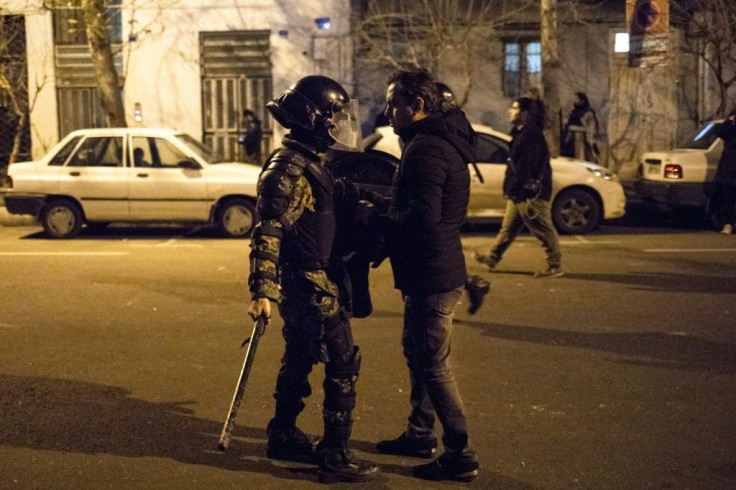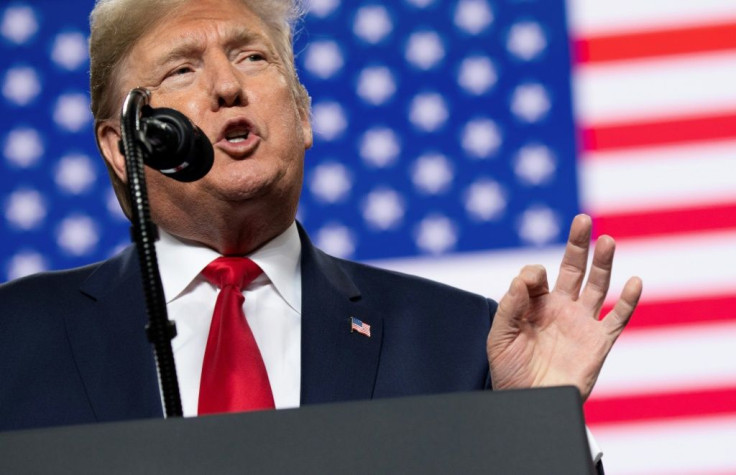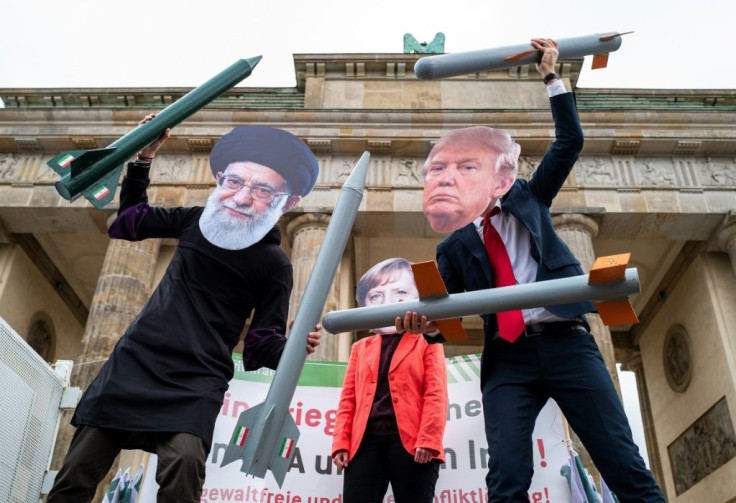Trump Seizes On New Iran Protests, But Goal In Question

With presidential tweets in Persian and stern warnings to the regime, Donald Trump's administration is rallying behind the latest protests in Iran -- and renewing suspicions that his real goal is regime change.
Just a week ago, massive crowds took to the streets in Iran to mourn powerful general Qasem Soleimani, who was killed in a US drone strike in Baghdad, and Tehran fired retaliatory missiles at US forces in Iraq without inflicting casualties.
Trump's response was, briefly, unusually conciliatory -- seeking a de-escalation with Iran and noting that they shared common interests, including fighting the Islamic State group.
But all has changed since Saturday when Iran admitted that it accidentally shot down a Ukrainian passenger jet, killing 176 people, setting off a new round of protests by Iranians furious at the deaths and the regime's initial denial.
The tragedy has "turned the tide against the Iranian leadership again," said Ali Vaez, director of the Iran Project at the International Crisis Group, which promotes conflict resolution.
"And of course the Trump administration is trying to add more fuel to the fire and exploit the situation," he said.
With Trump in the lead, the United States has sent out a double message -- voicing solidarity with the protesters and warning the regime not to clamp down.

The tycoon turned president, not known for his knowledge of foreign languages, has even sent out several tweets in Persian.
His daughter Ivanka boasted that one message was the most liked ever in Persian on Twitter, which is restricted in Iran.
US officials have also shared images of demonstrators tearing down portraits of Soleimani or refusing to step on the flag of the United States.

A senior US official said that the administration wanted to make sure that the clerical regime "knows that we're watching."
"If we can save one Iranian life from being killed by shining a light on what their government has done in past protests, then we think it's worth it," the official said on condition of anonymity.
In November, Iran cracked down on protests that erupted over an abrupt hike in fuel prices. Amnesty International says more than 300 died, while US officials say they toll could be over 1,500.
Iran has been under intensifying economic strain after Trump in 2018 pulled out of a nuclear accord and imposed sweeping sanctions aimed at combatting Tehran's influence.

Richard Goldberg, a former adviser to Trump on Iran who is now at the Foundation for the Defense of Democracies, which promotes a hard line on Tehran, said Trump's stance after the plane disaster was "not a regime change policy, it's a human policy."
"President Trump has made clear his policy is not regime change but that he stands with the Iranian people in their aspiration for a normal government that represents their interests," he said.
"The president's tweet is a shrewd move, putting even more pressure on the regime at its most unstable moment," he said.
But the Trump administration has sent mixed messages on its goals in Iran, which switched from US ally to sworn foe with the Islamic revolution 40 years ago.
John Bolton, who served until September as Trump's national security advisor and is close to Iran's exiled opposition, tweeted that "regime change is in the air" and called on the West to refuse any negotiations.
Trump, on Twitter, contradicted Bolton's successor, Robert O'Brien, who like other US officials said that the goal of US sanctions was a diplomatic agreement.
"Actually, I could care less if they negotiate. Will be totally up to them but, no nuclear weapons and 'don't kill your protesters,'" Trump wrote.
Mark Fitzpatrick, an associate fellow at the International Institute for Strategic Studies, said that while it was unclear how threatened the regime felt, it was clear that Trump "seeks to take advantage of Tehran's missteps."
"Winning their hearts and minds would be easier if he allowed Iranians to freely import medical supplies and aircraft safety equipment, and to visit the United States," Fitzpatrick wrote on the think tank's blog.
"He is instead taking the opposite, usual tack, applying more sanctions in hopes that economic distress will fan unrest."
Vaez said that Trump's messages would reinforce Iranians officials' convictions that they cannot negotiate with the United States, which under Trump scuttled the accord reached under his predecessor Barack Obama.
"The more the Trump administration gives the impression to the Iranians that it is seeking regime change, the less likely it becomes that any kind of de-escalation would be possible," he said.
"The Iranians are stuck between what they see as the Trump administration aggression and the Iranian government's repression."
© Copyright AFP 2024. All rights reserved.





















